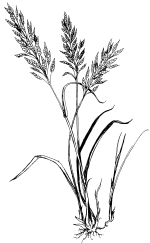
Grant-supported Projects
Habitat Restoration Projects
The Engeseth-Rinde Restoration Fund has supported restoration projects such as purchasing seeds used in restoring cropland to prairie at the Engeseth-Rinde Unit and removing invasive garlic mustard and wild parsnip at both the Engeseth-RInde and Koester Prairie Units.
Exploring Local Genetic Adaptation
In 2018, the Engeseth-Rinde Restoration Fund gave University of Minnesota graduate student Naomi Rushing a grant to support her dissertation research. Here is her description of the project:
"I study local adaptation in the context of habitat restoration. Local adaptation occurs when individual populations of a species evolve over time to be well suited to the particular conditions at their site. Over time, populations of the same species, but at different sites, can come to be adapted to very different environmental conditions. Local adaptation has been well supported by scientific research and theory but the geographic scale of local adaptation is still an open question. Just how local is local?
"Questions about the scale of local adaptation are highly relevant to habitat restoration work. Seed for restorations is often collected from remnant prairies. But where is the best place to collect seed? The current assumption is that local seed is best because it should be most suited to the conditions of the nearby restoration site. But how close is close enough? I have collected seed of Partridge Pea, a prairie annual, from seven remnant populations throughout the Midwest. I will grow them in a large planting at the Engeseth-Rinde unit of Prairie Creek WMA. I will compare their performance – how well they germinate, grow, and produce seeds – across the different seed sources in an effort to determine just how close is close enough to produce a robust population in a restored prairie site."
_JPG.jpg)
Partridge Pea (Chamaecrista)


